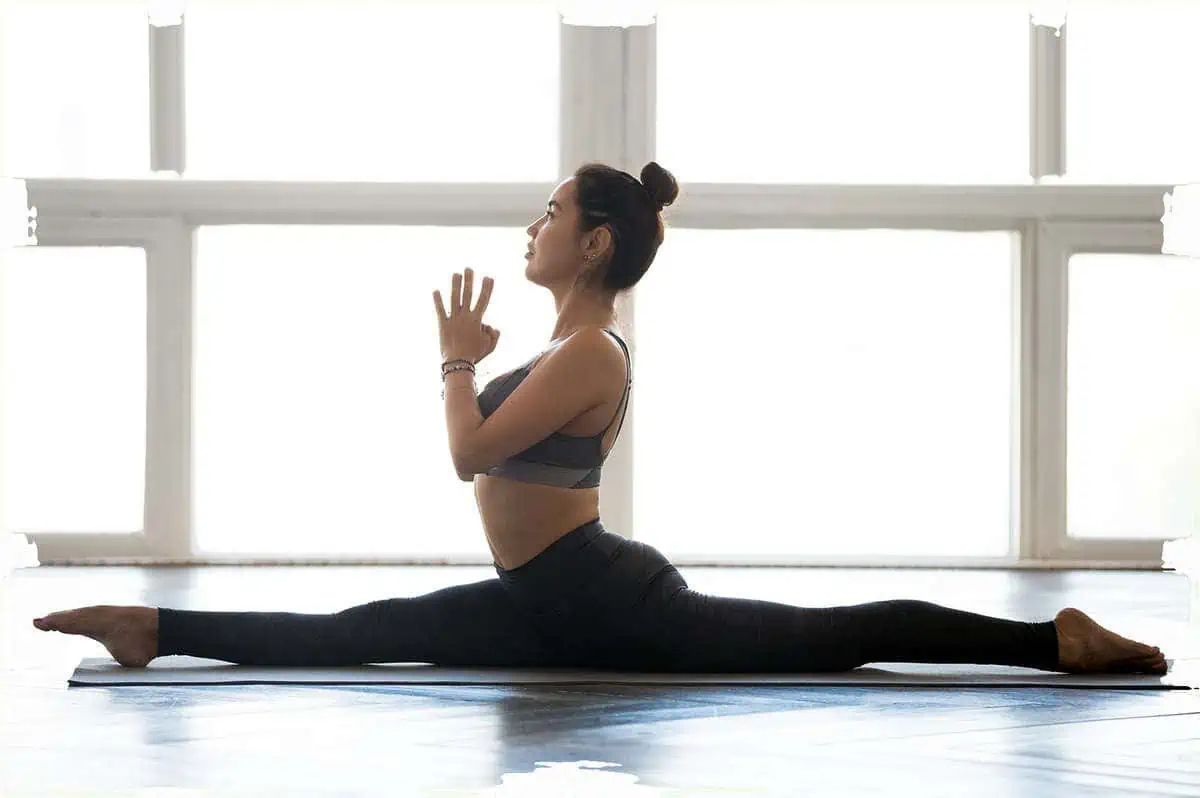Listen to this article:
Key Takeaway
Consistent stretching targeting the hip flexors, hamstrings, quads, and glutes can lead to achieving the splits, with benefits including increased flexibility, improved posture, and stress relief.
If you’re anything like me, you weren’t one of those little girls on the playground doing cartwheels, back handsprings, and dropping into the splits on command in elementary school.
I was an athletic little girl who opted for the more “tomboy” sports of softball and soccer. Suffice it to say, I am more flexible now, as an adult than I ever was as a child!
My yoga practice has allowed me to connect with my body in a way I never had before. I am more flexible, stronger, more connected, and more curious about my body—all thanks to yoga.
Although I haven’t quite achieved full front splits or center splits, I am getting closer! It is thanks to my consistent stretching practice that targets my hip flexors, glutes, hamstrings, and quads that my lower body is more flexible than ever before!
This article contains all of the tips, safety recommendations, and targeted preparation stretches to get you into the splits!
Contents
How to Start a Stretching Routine
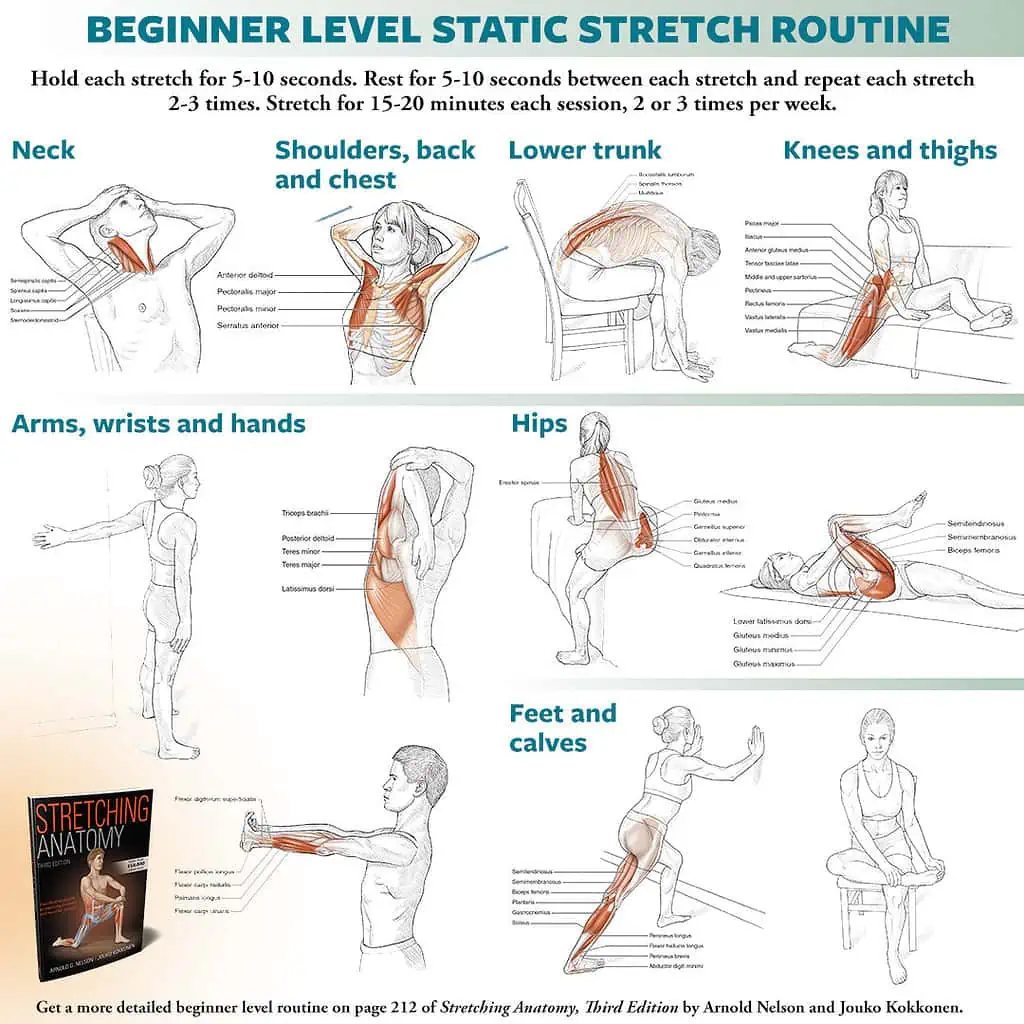
The number one tip to achieving the splits is consistency and discipline! The amount of time it takes you to get into the splits depends on your existing flexibility and fitness level. It could be anywhere from a month to a couple of years. Don’t let that timeline discourage you, though! Because as you progress in your journey, you will reap rewards every step of the way.
Initiating a consistent stretching routine will increase your flexibility (duh!), improve your range of motion, decrease stress, improve your posture, and provide all sorts of other benefits. Yes, even before you get into the actual splits!
If you’re a total beginner, you should perform your stretching routine about three times per week, with one day of rest between each session. Just like any other form of physical activity, your body needs time to rest and to adjust to the new shapes and movements.
Everyone needs a thorough understanding of the proper alignment and technique for each stretch. This is just as important for beginners as it is for seasoned yogis. Often, we get into bad habits without even knowing it or assume we know things when we don’t. These assumptions and bad habits can easily lead to injuries. It pays off, in the long run, to go back to the basics if you’re starting a new stretching routine to target getting into the splits.
If you are adding a stretching routine to an existing exercise routine, you should engage in five to ten minutes of active or dynamic stretching before your workout. Then, do at least 10 minutes of static or passive stretching after your workout.
Even when you are not exercising, you can devote at least ten minutes to your stretching routine every day, or a few days a week. Make sure your muscles are warmed up before engaging in any intense stretching.
Stretching routines should target major muscle groups and areas of the body. This can include leg muscles such as calves, hamstrings, and quads. Or the entire hip area, including hip flexors, glutes, and groin. You can also target the upper body, including your arms, neck, shoulders, and lower back.
Stretches that prepare you for the splits work mostly in the lower body. They open your hips and glutes and lengthen your hamstrings and quads, as well as work in your adductors and groin muscles.
Stretching Safety and Tips
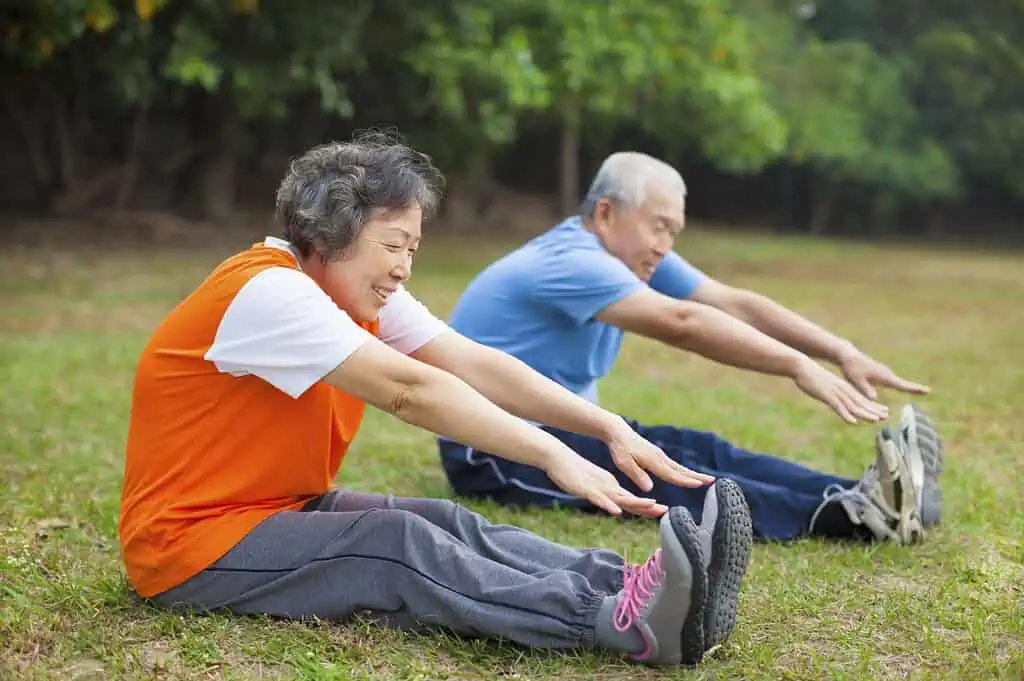
There are countless benefits to a safe stretching practice! However, stretching incorrectly and without proper form can easily result in injury. Follow these tips to stay safe and effective with your stretching routine.
Warm up for 5–10 minutes
You need to get your blood flowing and your body warm before you start stretching. Never go into a stretching session with cold muscles. Try going on a light five-minute jog, doing jumping jacks or burpees, or doing a few sun salutations!
Ease in and out of stretches
The key to safely stretching is going slow and gentle. Quick, jerking motions often result in injury. Stay connected to your breath, and use your breath to guide the stretch. Inhale to lengthen, and exhale to go deeper into the stretch. Inhale to come out of the stretch.
Stay with your breath
Continue mindfully breathing the entire time you are holding a stretch. Do not hold your breath in any stretch. Imagine you are sending your breath to the area that is being stretched, helping to soften and loosen it. Imagine your inhale is creating a bubble of space around the area, and your exhale is flushing out any tension or blockages being held there.
Hold for at least 30 seconds
Did you know that holding stretches for short periods of time can cause your muscles to shorten? This is because when you stretch, your muscles are pulled like elastic. If you hold it long enough, the elastic softens and forms into a new length. However, if you hold it for too short of a time, like five or 10 seconds, the muscles will snap back to an even shorter length than they were before. Just like an elastic band.
Don’t bounce
Bouncing while you stretch can cause you to overextend the muscle too abruptly. This can lead to tears or other injuries. Again, it is best to ease into and out of stretches to stay as safe and gentle with your body as possible!
Engage your core muscles
Even though you’re not actively working your core while you’re stretching, it is good to keep these muscles in mind. Lightly pulling your belly button in towards your spine protects other major muscle groups while you stretch, especially your back. It also helps you stay more intentional about proper alignment and stabilizes you through your trunk. While stretching, it is always important to know in what areas you should soften and in what areas you should stay active.
Always maintain a micro bend in the knee
Straight legs should never mean a hyperextended knee! The full expression of many stretches requires your leg to be straight. Even in these poses, always maintain a micro bend in the knee. To do this, engage the quadricep and feel the kneecap pull up. You can test if your knee joint is protected by gently trying to move your patella (bone on top of the knee). If it stays in place, you are doing a good job of protecting the knee joint. If it wiggles around, flex that quad!
Stop if you feel any pain
At any point during your stretches, if you feel any shooting or sharp pain, slowly and gently come out of the stretch. You will certainly feel sensations while you stretch, sometimes even intense sensations or some numbness or tingling. But it should never be painful. If you experienced pain during a specific stretch, it is a good idea to talk with a yoga instructor or physical therapist before attempting that stretch again.
Be wary of injuries
There are many modifications for stretches to be more accessible to people with injuries. Be wary of any interactions your injuries might have with a specific pose or stretch. For example, if you have sensitive knees, you can do a pigeon pose on your back. This modification removes almost all of the pressure put on the knee joint while providing the same stretch. Always let your yoga teacher know before class about any injuries you have. Consult your doctor or physical therapist if you are trying to start a stretching routine on your own.
Pay attention to your diet
Did you know that the food you eat can affect your flexibility? Choosing anti-inflammatory foods keeps your body loose and agile. Staying hydrated keeps your skin, bones, and muscles lubricated and ready to move.
Wear the right clothes
You want your clothes to allow you to move freely. Don’t wear anything that constricts your movement. However, you also don’t want it to be so loose and flowy that the extra fabric gets in your way. Form-fitting, spandex clothes generally work best.
Wear socks so you can slide into the splits more easily
This tip is specific to getting into the front splits, or the front supported splits. Wearing socks allows your feet to glide smoothly and easily into the pose. If you aren’t quite ready for full splits, make sure you have blocks under your hands. That way, you are still in control of how deep you go into the pose, and the slide of your socks doesn’t take your feet out from under you (literally).
Benefits of the Splits
So what is all the hype about with the splits, anyway?
The splits are more than just an aesthetically pleasing pose for your Instagram feed. Although, once you can get into them, no one will blame you for posting that picture!
Practicing the splits opens up your hips significantly. Increasing your hip flexibility and joint mobility improves your daily functioning for everyday tasks. Imagine being able to get on and off the floor with ease, bend down to get something off the floor, and perform household chores with no pain.
By becoming more flexible throughout your legs and hips, you also loosen your muscle tissue. Having loose muscle tissue improves your blood flow and circulation, which is beneficial to your overall health.
As you increase your flexibility, you will be able to move more freely and explore the sensations of your body more easily. One of the primary goals of yoga is to simply become curious and aware of your own body. Stretching also promotes relaxation, both in the mind and body. Allowing you to de-stress and re-center.
It is well known that our hips carry with them our deepest emotional blockages and childhood traumas. By opening up this area, you are also doing the hard work of clearing out these blockages. You may even be able to work through past traumas, griefs, and hurts without having to relive them in the mind. By flushing them out of the body, they no longer carry the power of your subconscious. You make space to live more freely in your body and mind.
Achieving the splits is something to be proud of! Getting into this posture can boost your self-confidence and the belief in yourself that you can do hard things. If you take consistent steps toward a goal, you can achieve it! It is extra rewarding when the outcome is as tangible as getting into a specific pose. Teaching the brain that you are capable of reaching your goals is empowering and life-changing.
The splits can help athletes improve their performance because it elongate and strengthen the muscles needed for jumping and running.
Any average person can benefit from the splits because they improve functional mobility. They allow more ease of movement in daily tasks such as picking up a child or getting in and out of a car.
And they can be very beneficial to the health of older adults. Keeping their hip joints open and flexible can decrease pain and the chance of falls or injury.
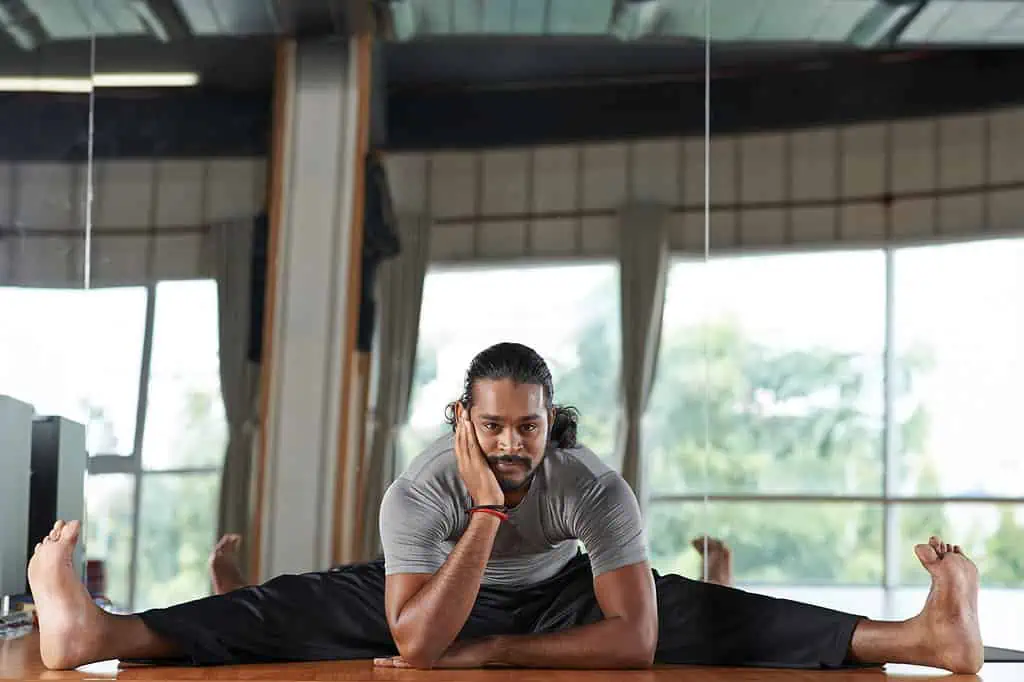
Overall, the splits are beneficial for:
- Increasing hip flexibility
- Increasing joint mobility
- Loosening muscle tissue
- Improving blood flow to the lower body
- Connecting deeper to your body
- De-stressing
- Clearing out emotional blockages stored in the hips
- Boosting self-confidence
- Improving athletic performance
- Improving functional mobility
Stretches to Prepare You for Front splits
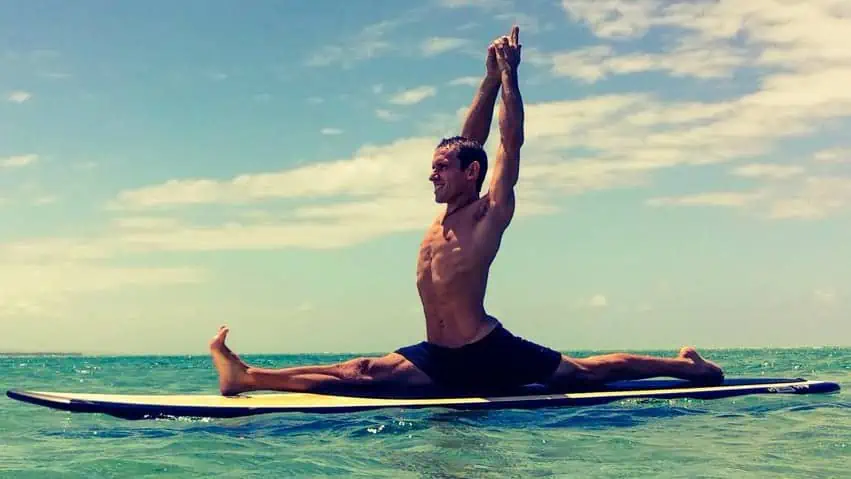
The front splits require flexibility in the hamstrings, glutes, quads, and hip flexors. They also require some strength through the thighs and core. Each of these stretches targets those areas to prepare you to get into the front splits. Eventually, you will have one leg straight out in front of you, your front foot flexed towards you, and one leg straight behind you, with your back foot flat on the floor.
Pyramid Pose
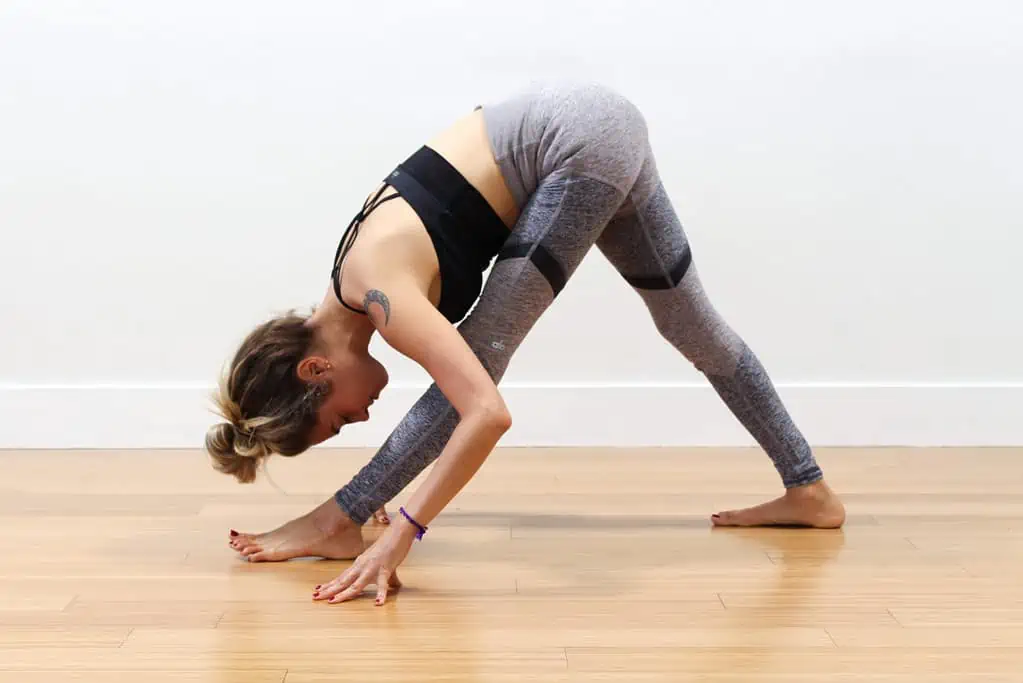
This pose stretches the hips and hamstrings and lengthens the spine. To get into it:
- Start standing at the top of your mat, feet parallel to each other at about hip’s width apart
- Step your right foot back about three feet
- Inhale your arms up to your ears, and square your hips and chest to the front of the mat
- Slowly begin to fold forward on top of your front leg, while keeping a micro bend in both knees
- Place your hands on the mat or blocks
- Relax your neck
- Breathe and hold for 30-60 seconds
- Repeat on the left leg
Half Splits
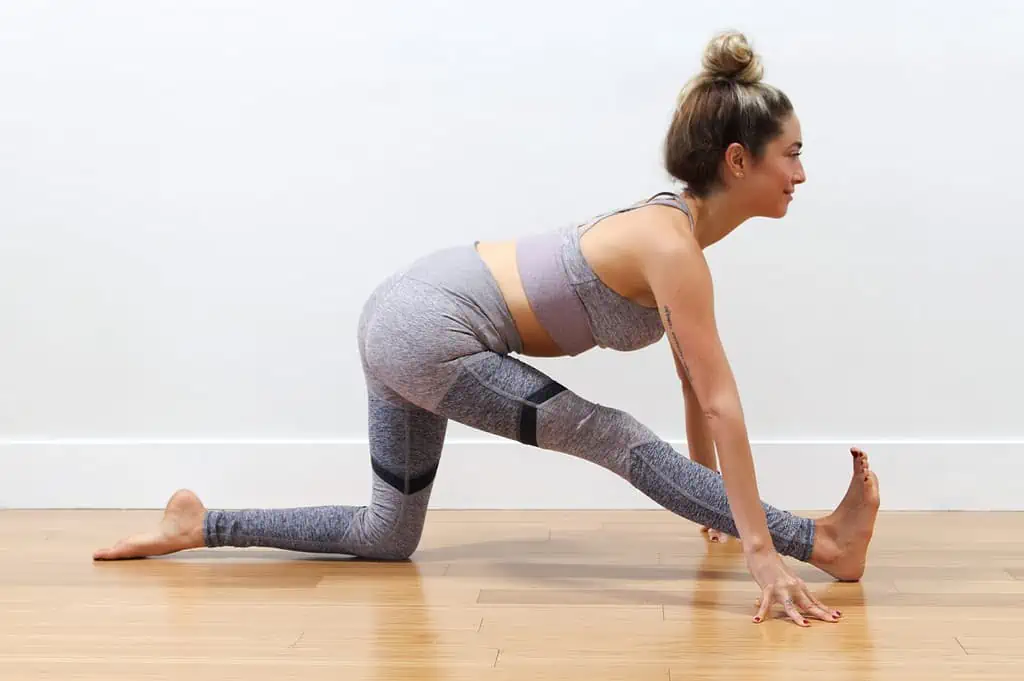
This pose stretches low back, hips, and legs. Opens hips and improves their range of motion. To get into it:
- Start in a low lunge position, with your right foot centered on your mat, and a 90-degree bend in your right knee. The left leg is bent behind you, left toes tucked
- Begin pushing the hips back, and straightening the right leg, coming up onto the heel of the right foot, flex the right toes towards you
- Place your hands on the floor or blocks
- Melt your chest and forehead towards your right leg
- Breathe and hold for 30-60 seconds
- Repeat on the left leg
Lizard Lunge
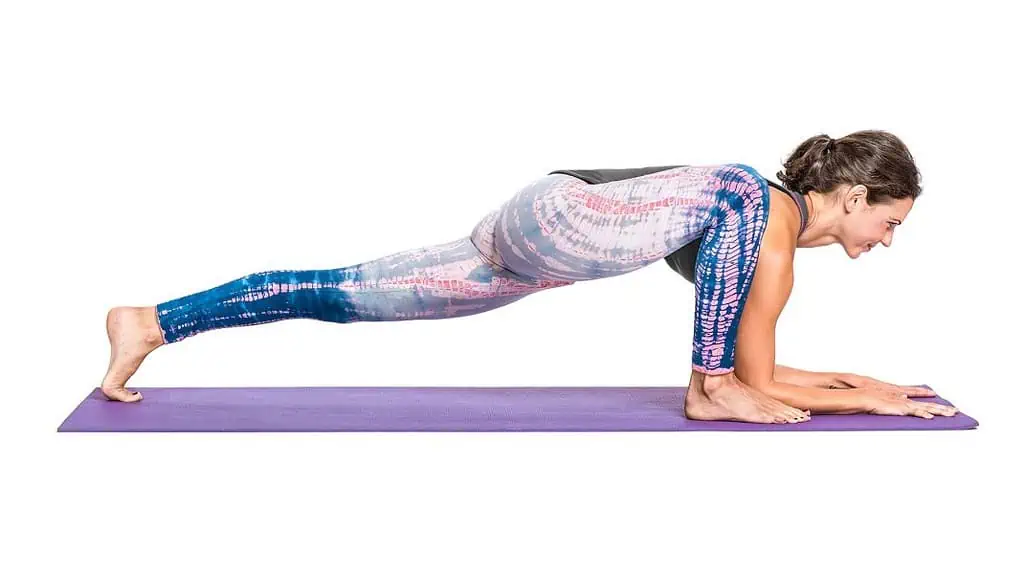
This pose stretches and strengthens the glutes, hamstrings, and quads. To get into it:
- Begin in down dog, then step your right foot up to the outside of your right hand
- Lower your left knee onto the mat
- You can lower your forearms onto the mat or blocks
- Ensure your toes and knees are tracking in the same direction
- Breathe and hold for 30-60 seconds
- Repeat on the left leg
Low Lunge
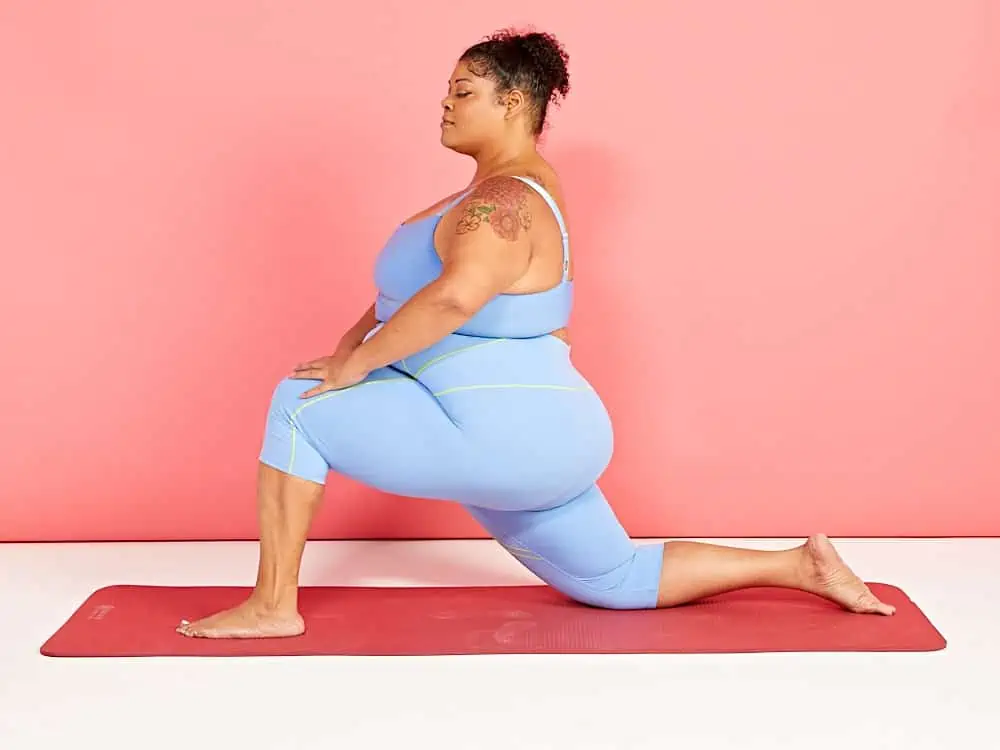
This pose strengthens and lengthens the glutes, quads, and hamstrings. To get into it:
- Begin in down dog, then step your right foot to the top of the mat in between your hands
- Lower your left knee onto the mat
- Inhale your arms up by your ears, exhale your shoulders away from your ears
- Press into the top of your left foot, to alleviate pressure on the left knee
- Keep your neck long and your gaze straight
- Breathe and hold for 30-60 seconds
- Repeat on the left leg
Figure Four Forward Fold
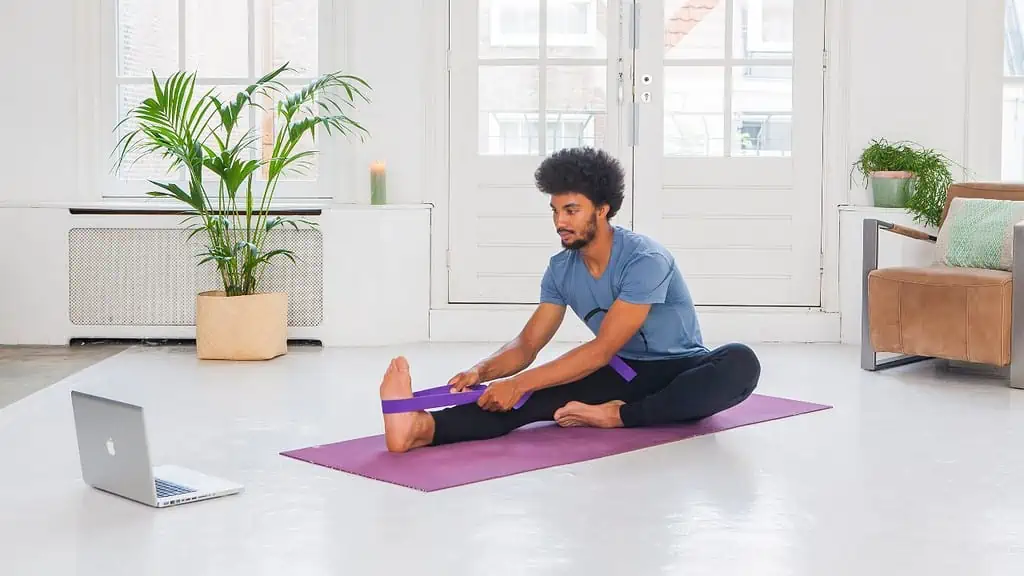
This pose stretches the back body, hamstrings, and inner groin muscles. To get into it:
- Begin seated with both your legs straight in front of you
- Bend your left leg so that the sole of your foot is pressed against the inner right thigh, your legs should look like the number four (4)
- Inhale your arms to your ears, and shrug your shoulders away from the ears
- Square your chest over the right leg, begin to fold forward, leading with your heart, and keeping the spine long and straight
- Rest your hands wherever they land- your calf, shin, ankle, the mat, or behind your foot
- Breathe and hold for 30-60 seconds
- Repeat on the left leg
Supine Hamstring Stretch
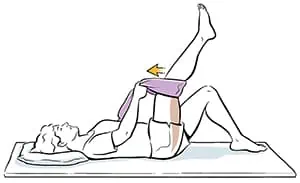
This pose strengthens and stretches your lower back, hamstrings, and calves. To get into it:
- Lay down on your back with your legs straight
- Inhale your right leg up, so the sole of your foot is stamped on the ceiling
- Reach for the right foot with a yoga strap, exercise band, or your hands
- Keeping the right leg as straight as possible (but not hyperextended) gently pull the shin in towards your face
- Breathe and hold for 30-60 seconds
- Repeat on the left leg
Low Lunge Quad Stretch
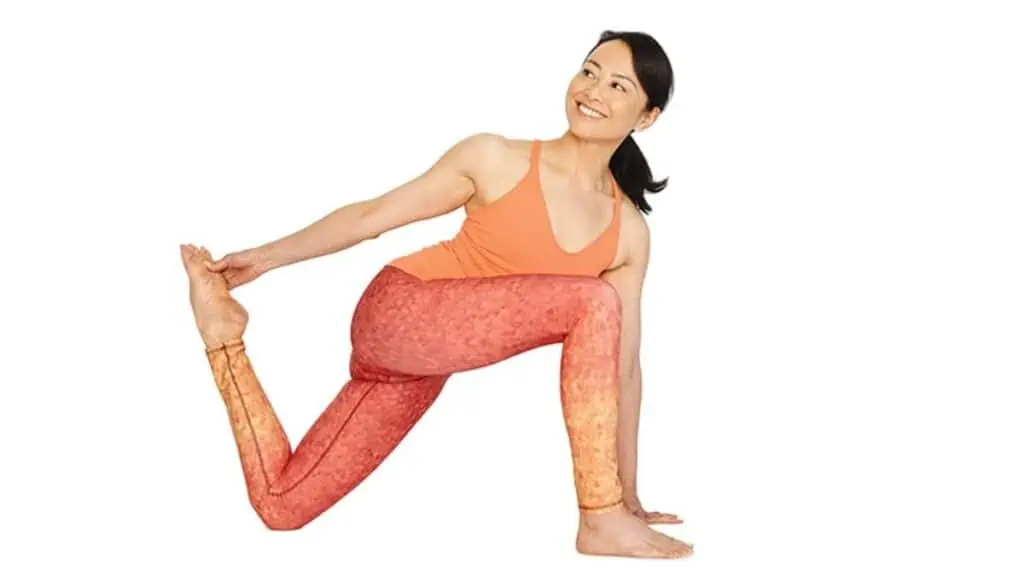
This pose stretches your quads, groin muscles, hip flexors, and glutes. To get into it:
- Start in a low lunge position, with your right leg forward, and left leg back
- Bend your left back leg towards your glutes
- Grab the left back foot with a yoga strap, exercise band, or your left hand
- Gently pull your left back foot towards your glutes
- If the pressure is too much on your left knee, double up your mat underneath the knee joint, or use a yoga blanket for padding
- Breathe and hold for 30-60 seconds
- Repeat on the other side
Supported Splits
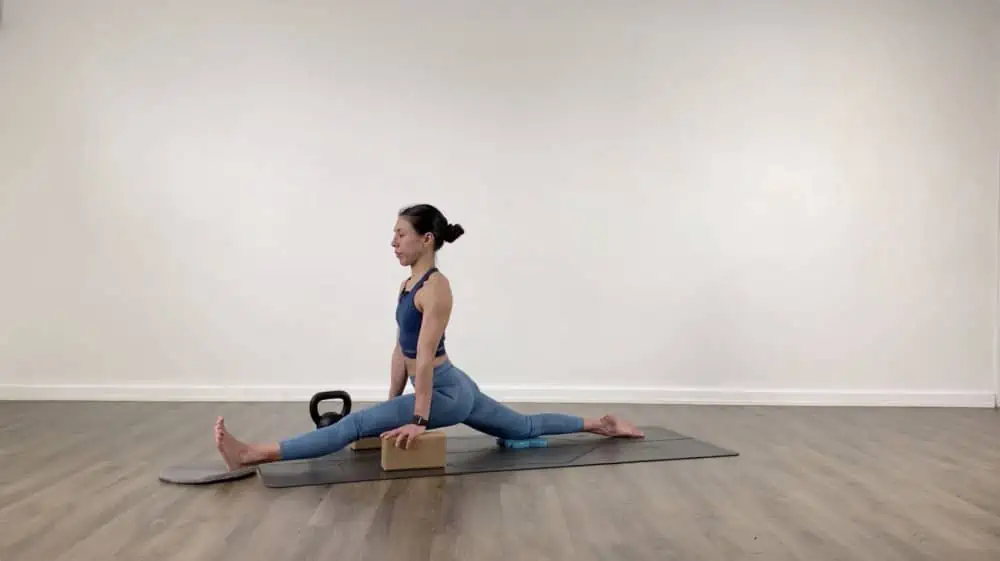
The final stop in your journey to the front splits! This modified pose allows you to get into the splits with the help of yoga blocks. To get into it:
- Start in a low lunge position
- Begin inching your front leg further forward, and your back leg further back, until your legs are almost straight
- You can use the yoga blocks either underneath each hand or underneath your pelvis- either way, they should help you control how deep you go into the posture
- Be very gentle and slow!
- Breathe and hold for 30-60 seconds
- Repeat on the other side
Front Splits
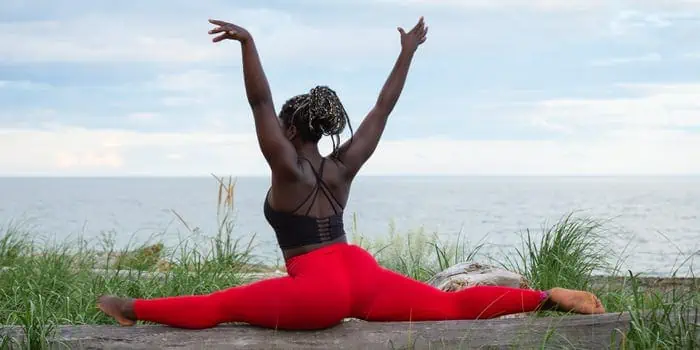
Now for the moment, you have been waiting for! It is suggested to have a daily stretching practice for about 30 days before attempting to get into the splits. If you feel like you are ready for them, congratulations! Pro-tip, wear socks to facilitate a smoother entry into the splits. To get into the front splits:
- Start in a low lunge position with your right knee forward, your left knee back and down
- Place your hands on the mat, on either side of your hips
- Point your right toes and begin gently and slowly gliding the right foot forward, straightening the right leg in front of you
- At the same time, point your left toes and start slowly gliding the left foot back, straightening the left leg behind you
- Once your hips are on the ground, you have made it into the splits!
- Stop gliding the feet forward and back if you feel any pain or discomfort on your way into the splits
- Breathe and hold for 30-60 seconds
- Repeat on the other side
Stretches to Prepare You for the Middle Splits
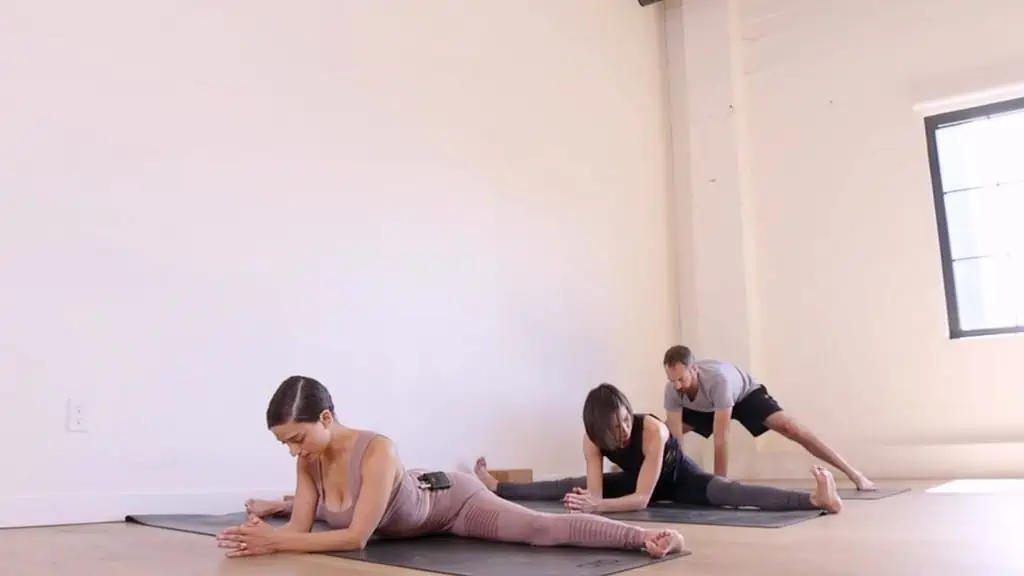
The middle splits require flexibility in your inner thighs and hip flexors. Each of these stretches will target opening and lengthening those areas. You also need to have a strong spine and core to support your trunk in this intense position. Eventually, you will have each leg all the way open out to each side, and make a 180-degree straight line angle with your legs and hips.
Malasana Squat
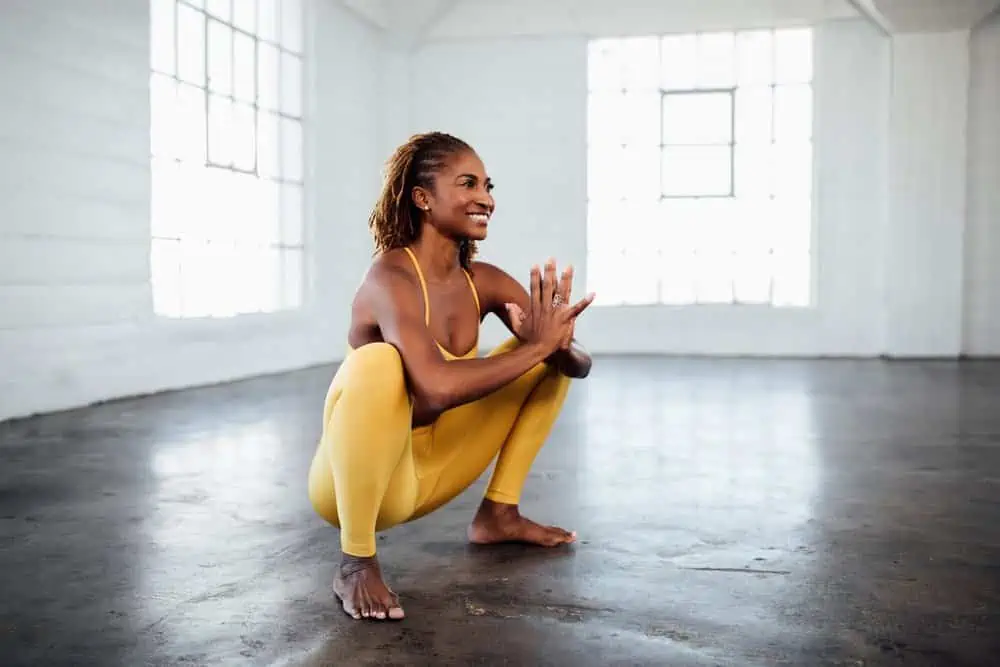
This pose is a deep hip opener. Not only does it stretch the hip flexors, but it also strengthens and lengthens the glutes, quads, hamstrings, and calves. To get into it:
- Stand on your mat with your feet wider than your hips, toes out, heels in
- Squat as deep as you can, while keeping your spine straight, chest lifted, and core and legs active (don’t just squat down so that your glutes rest on your heels)
- Bring your hands into prayer in front of you, pressing the knees open with the elbows
- Make sure your knees and toes are pointing in the same direction, and that your knees do not come over your toes
- If holding this pose becomes too strenuous, you may place a yoga block under your glutes to sit on, while still experiencing the hip opening
- Breathe and hold for 30-60 seconds
Pigeon Pose
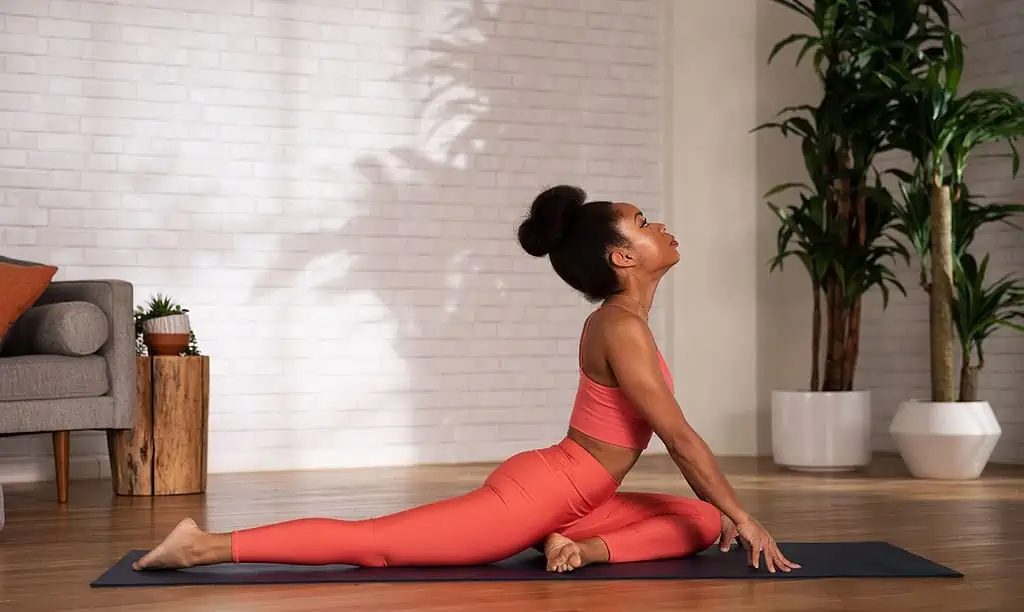
This pose deeply opens you all through the hip girdle. It stretches the hip flexors, groin muscles, and hip rotator muscles. To get into it:
- Start in downward facing dog
- Step your right leg up to the front of the mat, and set it up parallel to the front edge of the mat, so your knee comes behind your right wrist, and your ankle comes behind your left wrist
- Straighten your back leg behind you
- Press your hands into the mat, inhale, and expand your chest
- Exhale and mindfully melt your chest towards the mat, resting your head on a block, stacked hands, or the mat
- Soften your face and your shoulders, release tension and resistance in the hip
- Breathe and hold for 30-60 seconds
- Repeat with the left leg
Butterfly Pose
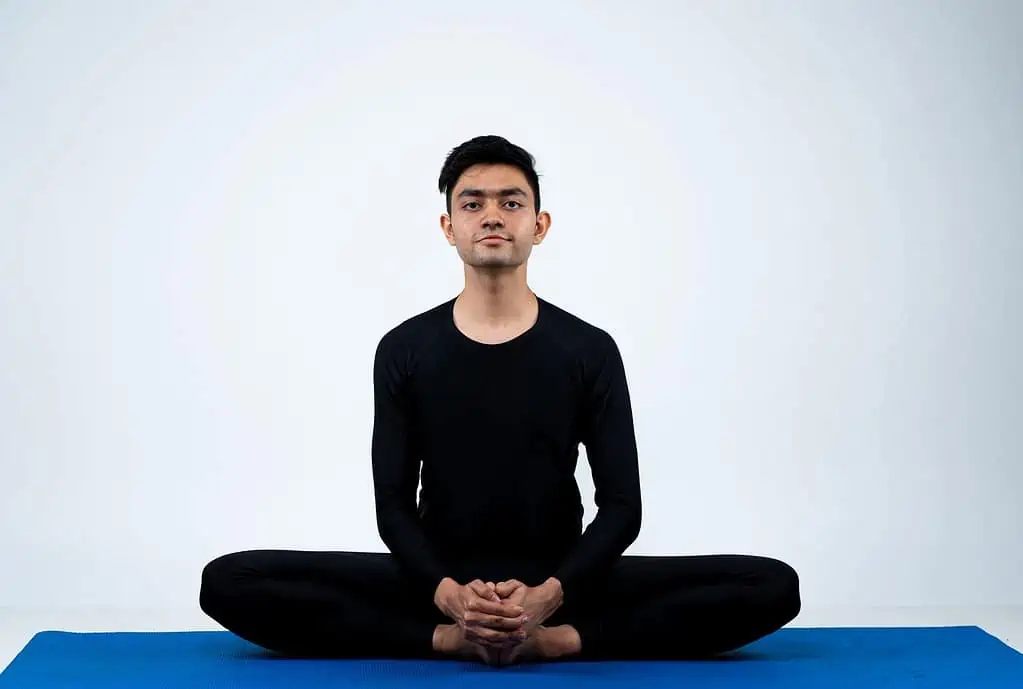
This pose is another groin, thigh, back, and hip flexor stretch. To get into it:
- Sit on your mat with the soles of your feet pressed together, knees out wide
- Interlace your fingers around your toes
- Bow forward over your legs, gently pressing into your knees with your elbows
- Breathe and hold for 30-60 seconds
Side Lying Hip Opener
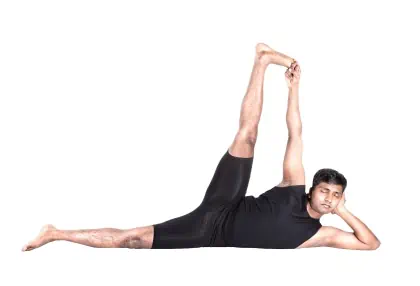
This pose opens the hips and increases their range of motion. To get into it:
- Come to lying on your side
- Bend into your bottom elbow and rest your head in your hand
- Send your left leg straight on the ground, lift your right leg straight toward your head
- Point all ten toes
- Grab onto your straight right leg with your right hand and gently pull it in closer
- Breathe and hold for 30-60 seconds
- Repeat on the left side
Supine Hamstring and Hip Stretch
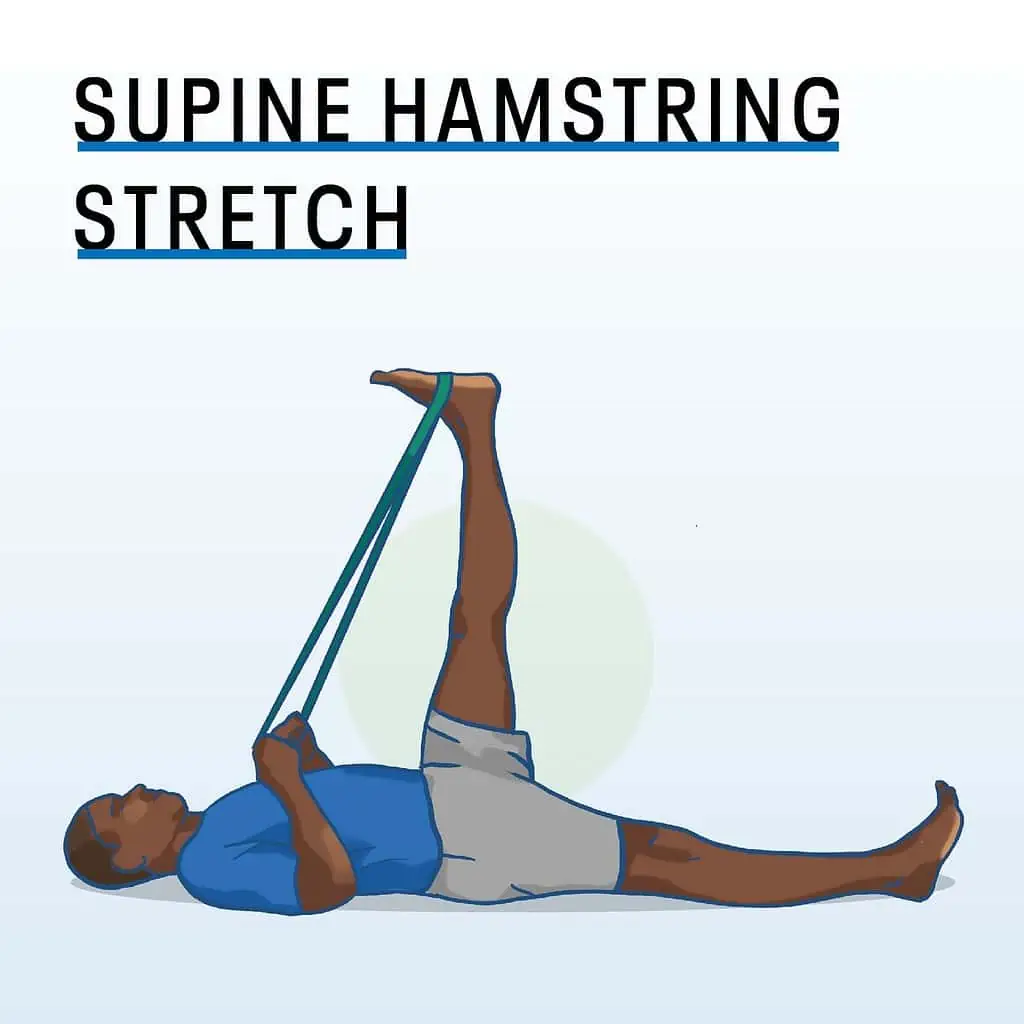
This pose opens your hip flexors as well as increases their range of motion. It also lengthens the hamstrings and calves. To get into it:
- Come to lying on your back, legs long on the mat
- Keeping the left leg long and toes flexed, bend the right knee toward your chest
- Grab onto your right big toe, and straighten the right leg out to the right any amount
- You can also open the right knee to the side, keeping the leg bent
- Breathe and hold for 30-60 seconds
- Repeat on the left side
Supine Straddle
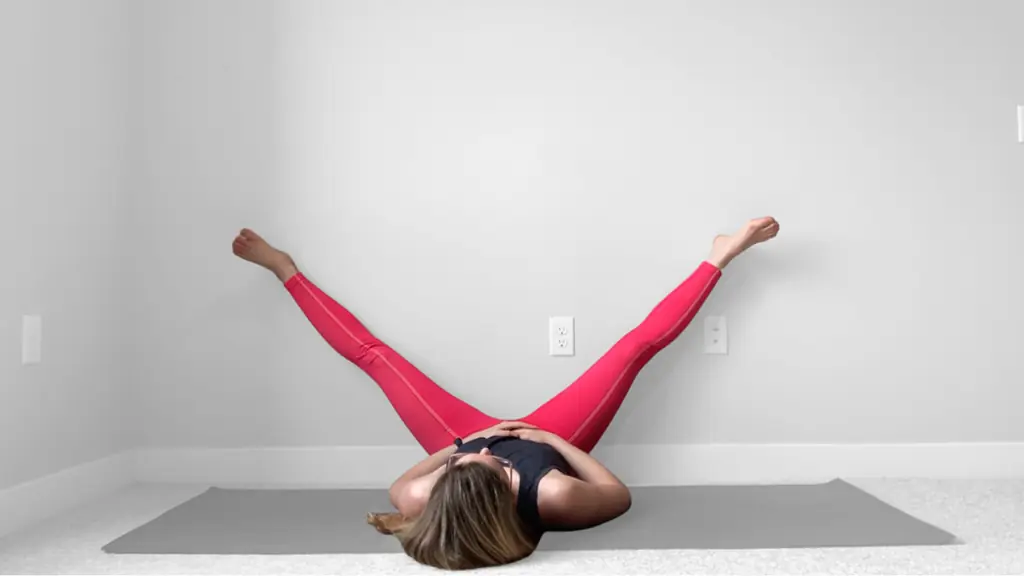
This relaxing pose will stretch your outer and inner thighs, hamstrings, and quads. To get into it:
- Begin in legs up the wall pose by sitting next to a wall with your left glute pressed against the wall, as you lay back rotate your hips so that both glutes are pressed against the wall, and straighten your legs so they go up the wall
- Now widen your legs so they are still straight and resting on the wall, but now in a wide V shape
- Breathe and hold for up to 15 minutes
Frog Pose
This pose is another intense hip opener targeting the hip flexors, inner thighs, and groin muscles. To get into it:
- Start in a tabletop position
- Slowly begin widening your knees, until they are as wide as they can go
- Flex your feet, and make sure they are in line with your knees, your shins should be parallel to one another
- Gently come down onto your forearms
- Relax your neck, face, and shoulders
- Try to release the tension and resistance in your groin and hips
- Breathe and hold for 30-60 seconds
Seated Wide Leg Forward Fold
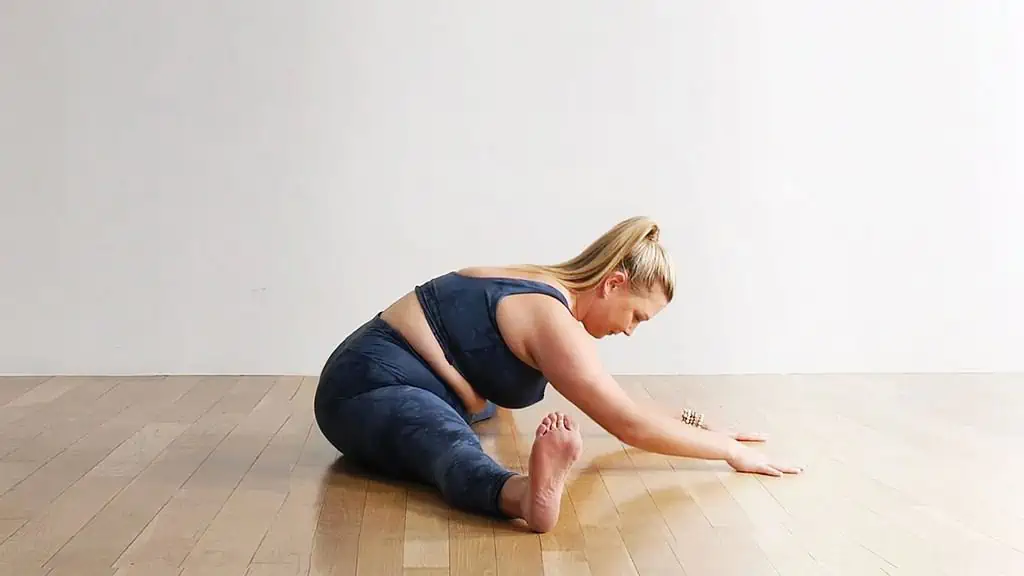
This pose stretches your outer and inner thighs, lengthens the hamstrings and quads, and opens the hip flexors. To get into it:
- Start in a seated position with legs straight in front of you
- Spread your legs apart, as wide as you comfortably can
- Inhale, expand through your chest
- Exhale and begin to fold forward, leading with your heart and keeping a straight back
- Rest your hands, forearms, or forehead on the mat
- Breathe and hold for 30-60 seconds
Middle Splits
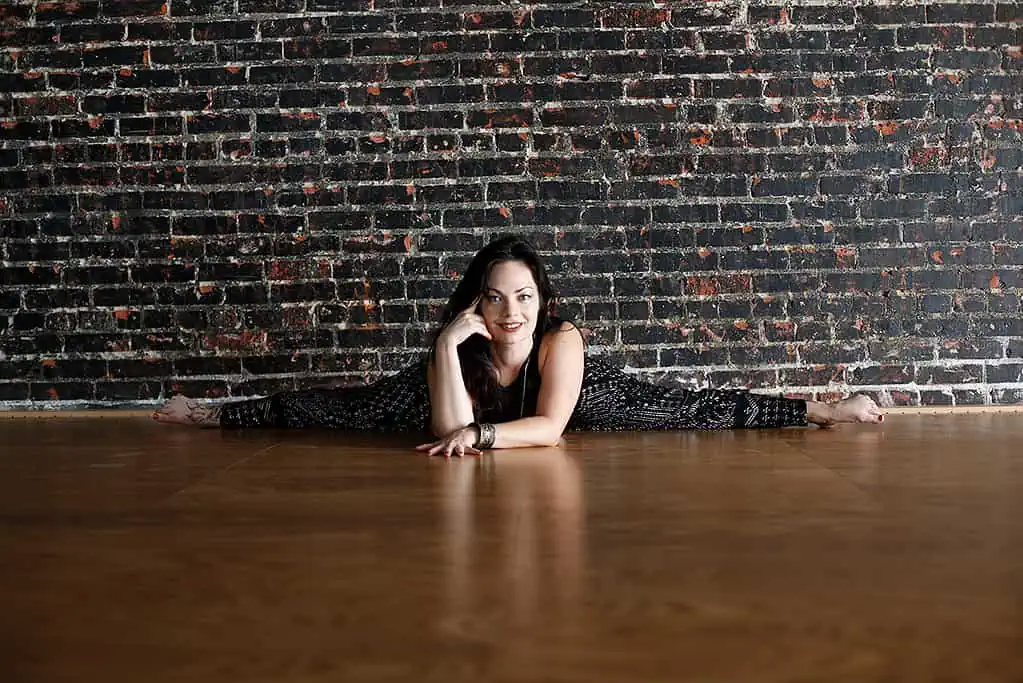
After weeks, months, or even years of practicing those preparatory poses- you are finally ready to get into your side splits! The goal and full expression of side splits is to extend both legs completely to opposite sides, so they make one straight line from left toes to right toes. To get into it:
- Sit with your whole back flat against a wall, legs straight out in front of you
- Make sure there’s no rotation in your pelvis or hips, and that your lower and mid back are flat against the wall
- Slowly begin to open your legs as wide as you can, all the way to either side
- Keep your torso as elongated as possible, if you choose to lean forward, make sure you do not bend or arch your back, but keep a long straight spine instead
- Press your hands into the mat in front of you, about shoulder width apart, for support
- Aim to form a straight line with your legs, ankles aligned to knees aligned to hips
- Breathe and hold for 30-60 seconds
Types of stretches
Dynamic
Dynamic stretching improves speed, agility, and acceleration. As suggested by its name, this is an active form of stretching that involves tightening the muscles and moving the joints through their full range of motion. Twists, lunges, and leg swings are examples of dynamic stretching.
Static
Static stretching improves flexibility. To perform a static stretch, you move a muscle as far as it can go without any pain, then hold it for 30 to 60 seconds. Examples of static stretches include quad stretches and figure four holds.
Ballistic
Ballistic stretching is a controversial method of increasing the range of motion. It is a forceful method of stretching in which you bounce and jerk your way further into traditional stretches. Many athletes practice this to improve their performance, but it can also lead to injury.
PNF
PNF stretching can increase flexibility, prevent injury, and help you move more comfortably. It is a stretching technique developed by doctors and physical therapists. The goal of PNF is to stretch a muscle to its limit and then relax it.
Passive
Passive stretching requires absolutely no effort from you! These stretches rely on gravity, props, or a partner to do the work for you. Benefits include relieving stress, increasing flexibility, and being accessible to those with mobility limitations. A passive forward fold and reclined spinal twists are examples of passive stretches.
Benefits of Stretching
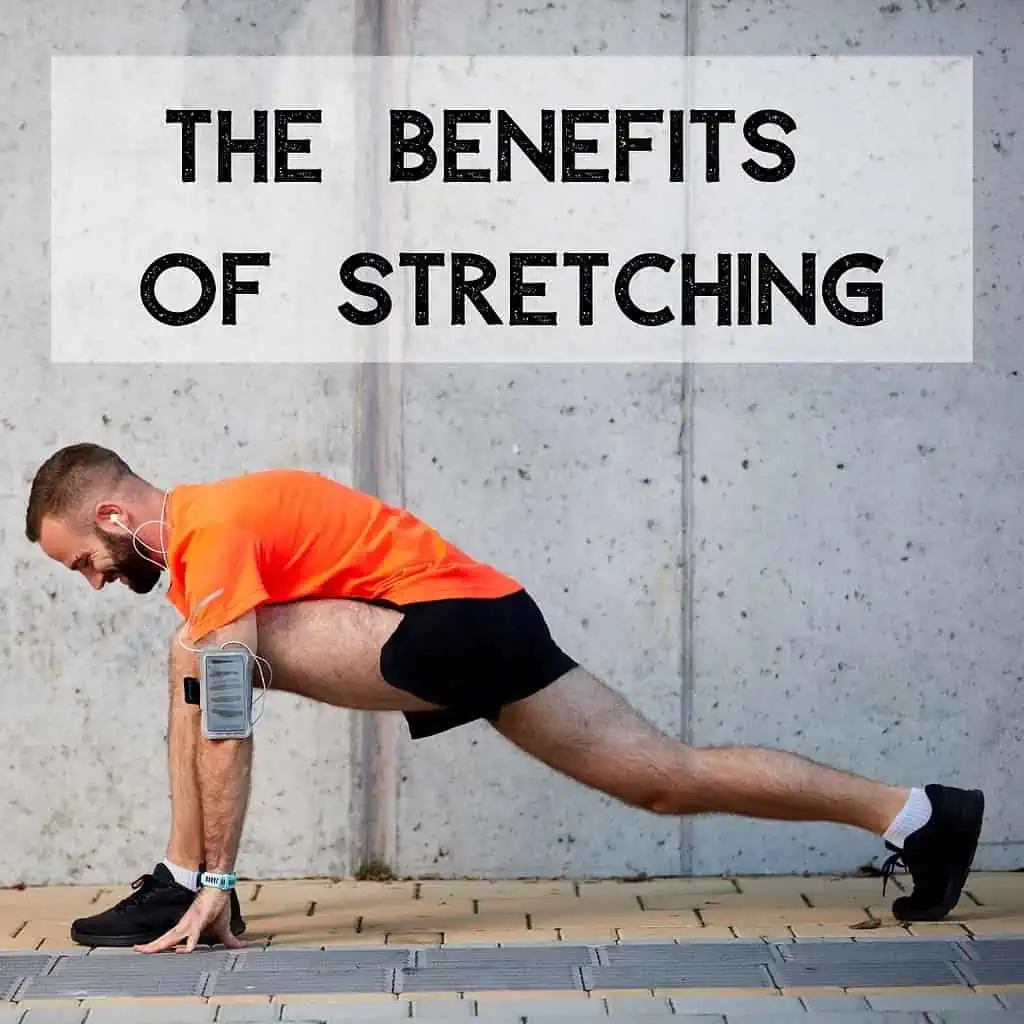
Your journey to the front splits or middle splits is more than about achieving these poses. The process of getting there holds a whole host of benefits for your mind and body.
Increase flexibility
It is no secret that stretching increases your flexibility! But did you know that flexibility is crucial for your overall health? Being more flexible allows you to perform daily tasks with ease, and decreases the chance of injury from these tasks or exercises. Plus, increased flexibility can help delay mobility challenges due to aging.
Increase range of motion
This study discussed the importance of stretching to increase the range of motion of your muscles. Being able to use each muscle to its full range of motion provides you with more freedom in your movement and decreases the chance of injury. Static, dynamic, and PNF stretching are all effective at increasing your range of motion.
Increase blood flow to muscles
Having efficient and healthy circulation is important so that your blood can deliver the proper nutrients to each area of your body. Stretching increases blood flow and improves circulation. More blood pumping to your muscles means they will be able to perform at their peak performance, have less recovery time in between activities, and have less muscle soreness after activities. Sounds like a win all around!
Improve performance through physical activity
Stretching improves your performance by improving circulation, as stated above. But what exactly does your blood flow have to do with athletic performance? Your blood delivers much-needed oxygen and nutrients to your major muscle groups. Ever gotten a cramp while running? That was because there wasn’t enough blood flow to that muscle! Stretching also lightly strengthens muscles and decreases recovery time.
Improve posture
Stretching is all about proper alignment, with careful attention paid to the spine, hips, and core muscles. These are all of the major areas of the body that can make or break your posture as well. Not only will a stretching routine make you more aware of your posture in general, but it will also help improve it. This study discusses the effect stretching and strengthening major muscle groups has on musculoskeletal pain, alignment, and ultimately, posture.
Heal and prevent back pain
Back pain is often caused by your back picking up the slack of tight and weak muscles. Stretching increases your range of motion, ensuring that each muscle does its proper job. Additionally, a regular stretching routine can help build strength and stability through your entire trunk, protecting the spine and back from undue pressure and strengthening the back muscles themselves.
Stress relief
People who experience anxiety and chronic stress tend to be more tense at baseline than those who don’t. And in 2023, who isn’t experiencing chronic stress and anxiety? Stretching helps to release that physiological tension most of us are walking around with. Releasing the neck, shoulders, and upper back can be especially relieving. And, guess what? A more relaxed body will result in a more relaxed mind.
Calm mind
Stretching calms your mind by relieving physiological tension in the body. It also provides an opportunity to slow down and relax during the day, while staying present and mindful. Your stretching time can be a special time of day when you turn off electronics and slow down your thoughts, tuning inward to your inner landscape and the sensations in your body.
Decrease tension headaches
Stretching can reduce tension headaches by literally melting away the tension you are holding in your body, and bringing your mind into a state of calm. Tension headaches can be truly disruptive and debilitating. Make sure you drink plenty of water and get enough sleep to combat these painful headaches as well.
FAQs
Can everyone eventually get into the splits?
Most people, even if they are not naturally flexible, can eventually get into the splits. Everyone can perform some version of this straddle stretch. And everyone can work to increase their hip flexibility and mobility. However, it is quite possible that some people’s anatomy will not allow them to get into the splits.
How long does it take to work up to the splits?
How long it will take completely depends on each person. Your movement history and current level of flexibility will greatly affect your timeline. Athletes such as dancers and gymnasts may achieve the splits in as little as four weeks after starting a targeted routine. For others, it could take years. The key to staying motivated in your splits journey is to celebrate all of the progress you are making along the way.
What should I target to train for the splits?
You will need to increase your flexibility in your hip flexors, groin, glutes, quads, and hamstrings.
Is it safe to stretch every day?
Doing some light stretching is safe, even beneficial, to do every day! However, for deeper stretching, it is best to only perform those poses every other day.
Which split posture is easier to learn?
The front splits are easier for most people to learn. The hips are opened but not squared, and the back leg is externally rotated which allows for a greater range of motion.


